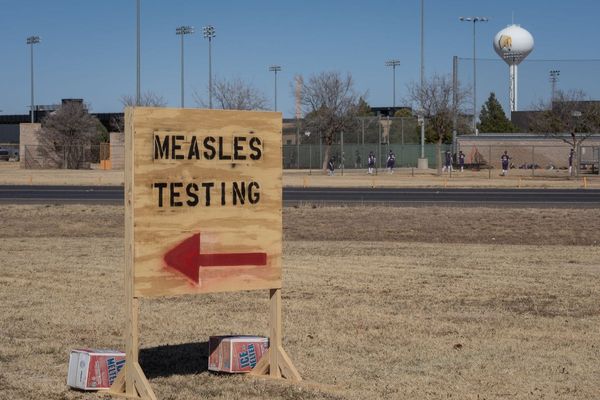
Five months ago, the talk in supermarket-land was of price wars. A wounded Asda, with the corporate hero Allan Leighton back at the helm 25 years after leading the last turnaround, was out to restore the chain’s “DNA” as the price-setter among the traditional groups.
A “pretty significant war chest” would be dedicated to the task, he promised. The group’s owners – the private equity firm TDR Capital and the remaining Issa brother from the 2021 leveraged buyout – were prepared to suffer a “material reduction in our profit” in the coming year in order to get the sales line moving again. Even shares in the mighty Tesco shuddered in the face of this apparent sudden shift in competitive conditions.
So how’s this price war going? Well, you’d struggle to tell it exists. Tuesday’s scoreboard of market shares from the research group Worldpanel, formerly Kantar, told a familiar tale. Tesco and Sainsbury’s, the two FTSE 100 firms, enjoyed a red-hot summer. Asda and Morrisons, the duo carrying heaps of buyout debt, did not.
In Asda’s case, sales were down for the 15th month in a row. In a trade where a movement of a single percentage point in market share counts as significant, the remarkable statistic is that Asda’s slice of the grocery market has declined from 14.8% at the time of the buyout to 11.8%. In the old days, Asda used to jostle with Sainsbury’s (15% today) to be second to Tesco. Now a still-expanding Aldi is on its heels, with 10.8%. Over at Morrisons (8.4%), there are more signs of stability, but it is still about to be passed by Lidi, on 8.3%.
The moral looks simple and unsurprising: it is hard to throw punches when you’re loaded up with buyout debt and face better-financed rivals. Tesco and Sainsbury’s always have the option of dialling down their share buybacks, which are currently chunky, if more financial ammunition is required. Meanwhile, the UK operations of Aldi and Lidl are part of enormous, privately owned international groups that define the long-term in terms of decades, as opposed to private equity’s half-decade.
To be fair to Leighton, he always said a turnaround at Asda would take three to five years, so one shouldn’t write him off. There is still plenty he can do, beyond price-cutting, to fix the basics. One suspects he’ll stop the bleeding in the sales line soon enough when the benefit of an £800m investment in new IT systems kicks in.
But the notion that a resurgent Asda could seriously imperil the progress of Tesco and Sainsbury’s, which was the stock market’s worry in March, always felt fanciful – and still does.
The point about the 2021 buyout of Asda is that TDR and the Issa brothers used so little equity that they could de-risk their investment via various shuffles with petrol stations and sale-and-leaseback property transactions. Their original gamble is probably a winner even if Asda merely stabilises from here. By contrast, sustaining a serious price war might require a fresh injection of equity, meaning fresh investment risks for them.
If Asda’s owners are up for such an adventure, it would be time to rethink. But, as things look today, the talk of price wars was phoney and the real bargain was shares in Tesco, which dipped to 321p during the wobble in March and are now fully a pound higher. The improvement in Sainsbury’s stock is almost as good. Neither would have happened if the price war had been real.







